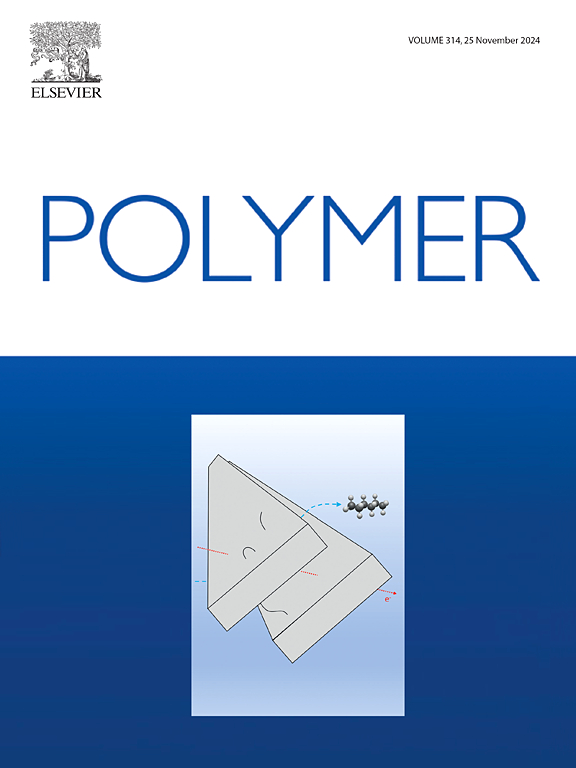Transparent polyimides derived from phenyl group substituted 2,2′-bis(trifluoromethyl)benzidines with low dielectric constant at high frequencies
IF 4.1
2区 化学
Q2 POLYMER SCIENCE
引用次数: 0
Abstract
With the rapid advancement of 5G communication, polyimides, currently employed as an insulating interlayer material in commercial applications, can no longer fulfill the low dielectric constant and low dielectric loss requirements imposed by high-frequency signals. To solve this problem, increasing the free volume between molecular chains is a practical and effective way to achieve the low dielectric constant of polyimides. In this work, two novel diamines with different bulky phenyl groups at ortho position of the amino group of 2,2′-bis(trifluoromethyl)benzidine (TFDB) were designed and synthesized successfully through electrophilic substitution and Suzuki-Miyaura coupling. Then a series of polyimides were prepared with these diamines and 4,4′-(hexafluoroisopropylidene)diphthalic anhydride (6FDA). All polyimides exhibited glass transition temperatures of 318–351 °C, excellent optical transmittances of 82.5–85.9 % at 400 nm, and low dielectric constants of 2.30–2.65 at 11 GHz. And they showed good solubility and hydrophobicity. The PI-5 exhibited the best dielectric properties with a dielectric constant of 2.30 and a dielectric loss of 0.0037 at 11 GHz, demonstrating promising application prospects in high-frequency communication.


求助全文
约1分钟内获得全文
求助全文
来源期刊

Polymer
化学-高分子科学
CiteScore
7.90
自引率
8.70%
发文量
959
审稿时长
32 days
期刊介绍:
Polymer is an interdisciplinary journal dedicated to publishing innovative and significant advances in Polymer Physics, Chemistry and Technology. We welcome submissions on polymer hybrids, nanocomposites, characterisation and self-assembly. Polymer also publishes work on the technological application of polymers in energy and optoelectronics.
The main scope is covered but not limited to the following core areas:
Polymer Materials
Nanocomposites and hybrid nanomaterials
Polymer blends, films, fibres, networks and porous materials
Physical Characterization
Characterisation, modelling and simulation* of molecular and materials properties in bulk, solution, and thin films
Polymer Engineering
Advanced multiscale processing methods
Polymer Synthesis, Modification and Self-assembly
Including designer polymer architectures, mechanisms and kinetics, and supramolecular polymerization
Technological Applications
Polymers for energy generation and storage
Polymer membranes for separation technology
Polymers for opto- and microelectronics.
 求助内容:
求助内容: 应助结果提醒方式:
应助结果提醒方式:


